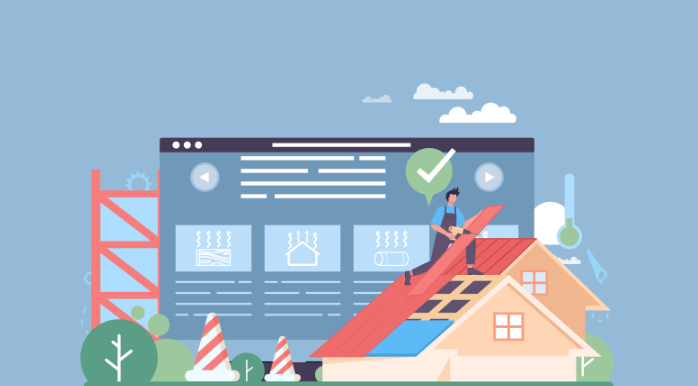In today’s competitive market, roofing businesses need to leverage every tool available to streamline operations and enhance customer satisfaction. The integration of roofing CRM (Customer Relationship Management) and roofing software can transform how roofing companies manage projects, client relationships, and back-office operations. This article explores the essentials of seamless system integration, focusing on how roofing businesses can maximize the benefits of these technologies.
Understanding CRM and Roofing Software
What is Roofing CRM?
A roofing CRM system helps manage customer interactions, sales, and communications. It tracks leads, customer interactions, sales opportunities, and project statuses, providing a centralized platform to ensure that customer needs are met efficiently and effectively.
Capabilities of Roofing Software
On the other hand, roofing software typically focuses on the operational aspects of a roofing business. This includes project management, inventory control, scheduling, job costing, and reporting. The software helps ensure that projects are completed on time, within budget, and to the required quality standards.
Benefits of Integrating CRM with Roofing Software
Streamlined Operations
Integrating roofing CRM and software ensures that data flows seamlessly between customer relationship activities and operational tasks. This integration eliminates data silos, reduces manual data entry, and minimizes errors, leading to more streamlined operations.
Enhanced Customer Service
A unified system provides a comprehensive view of customer interactions and project status. This enables roofing companies to respond more quickly to customer inquiries, provide updates, and manage follow-ups more effectively, enhancing overall customer service.
Improved Sales Tracking
Integration allows for better tracking of sales and marketing efforts. Companies can easily track which strategies are most effective and refine their sales processes based on real-time data from both the CRM and operational software.
Increased Efficiency
By automating routine tasks and synchronizing data across platforms, integrated systems free up time for staff to focus on more valuable activities. This increase in efficiency can lead to cost savings and improved project turnaround times.
Key Features to Look for in Integrated Roofing Systems
Robust Data Management
Effective integration requires robust data management capabilities. Look for systems that offer real-time synchronization and the ability to handle large volumes of data without compromising performance.
User-Friendly Interface
The system should have a user-friendly interface that makes it easy for all users to navigate and utilize the features of both the CRM and roofing software seamlessly.
Customization and Scalability
Every roofing business has unique needs. The chosen system should be customizable to adapt to specific business requirements and scalable to accommodate growth.
Mobile Accessibility
With teams often working on-site, mobile accessibility is crucial. Systems should be accessible via smartphones and tablets, allowing field workers to update information in real-time.
Implementing Your Integrated Roofing System
Planning and Goal Setting
Before integrating a roofing CRM and roofing software, it’s essential to define clear goals. What do you hope to achieve with the integration? Whether it’s improved customer satisfaction, faster project completion, or better data insights, having clear objectives will guide the integration process.
Choosing the Right Vendor
It is vital to select a vendor who understands the nuances of the roofing industry. The right vendor will offer a solution that aligns with your business goals and integrates seamlessly with your existing processes.
Training and Support
Proper training and ongoing support are critical for successful implementation. Ensure that your team is well-trained on the new system and that you have access to comprehensive support for any issues that arise.
Continuous Evaluation and Improvement
After implementation, continuously evaluate the system’s performance against your set goals. Regular assessment helps identify areas for improvement and ensures that the system evolves with your business needs.
FAQs
What is roofing CRM?
Roofing CRM (Customer Relationship Management) is software designed specifically for roofing businesses to manage customer data, interactions, and sales processes efficiently.
How does integrating CRM and roofing software benefit a business?
Integrating CRM and roofing software streamlines operations, improves customer service, enhances data accuracy, and boosts overall efficiency by allowing seamless communication between sales and operational teams.
Can roofing software integrate with existing company systems?
Yes, most modern roofing software is designed to integrate smoothly with existing systems, including accounting and ERP software, ensuring data consistency and reducing manual entry.
What should I look for when choosing roofing CRM software?
When choosing roofing CRM software, look for features like ease of use, customization, mobile accessibility, robust data management, and comprehensive customer support.
How do I ensure the security of my data when using roofing CRM and software?
Ensure your data’s security by selecting a software provider that offers encrypted data storage, regular backups, and compliance with industry-standard data protection regulations.
Conclusion
Integrating roofing CRM and roofing software offers numerous benefits that can lead to more efficient business operations and improved customer relationships. By following the guidelines discussed, roofing companies can ensure a successful integration that maximizes these benefits. Remember to choose solutions that fit your specific needs and to engage in continuous evaluation to keep your systems effective as your business grows.

